Yintang Yang
SLSSNN: High energy efficiency spike-train level spiking neural networks with spatio-temporal conversion
Jul 14, 2023Abstract:Brain-inspired spiking neuron networks (SNNs) have attracted widespread research interest due to their low power features, high biological plausibility, and strong spatiotemporal information processing capability. Although adopting a surrogate gradient (SG) makes the non-differentiability SNN trainable, achieving comparable accuracy for ANNs and keeping low-power features simultaneously is still tricky. In this paper, we proposed an energy-efficient spike-train level spiking neural network (SLSSNN) with low computational cost and high accuracy. In the SLSSNN, spatio-temporal conversion blocks (STCBs) are applied to replace the convolutional and ReLU layers to keep the low power features of SNNs and improve accuracy. However, SLSSNN cannot adopt backpropagation algorithms directly due to the non-differentiability nature of spike trains. We proposed a suitable learning rule for SLSSNNs by deducing the equivalent gradient of STCB. We evaluate the proposed SLSSNN on static and neuromorphic datasets, including Fashion-Mnist, Cifar10, Cifar100, TinyImageNet, and DVS-Cifar10. The experiment results show that our proposed SLSSNN outperforms the state-of-the-art accuracy on nearly all datasets, using fewer time steps and being highly energy-efficient.
Ultra-low Latency Adaptive Local Binary Spiking Neural Network with Accuracy Loss Estimator
Jul 31, 2022
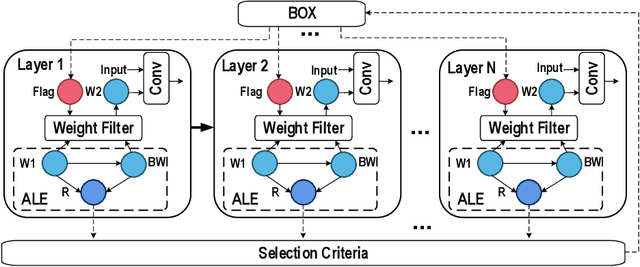
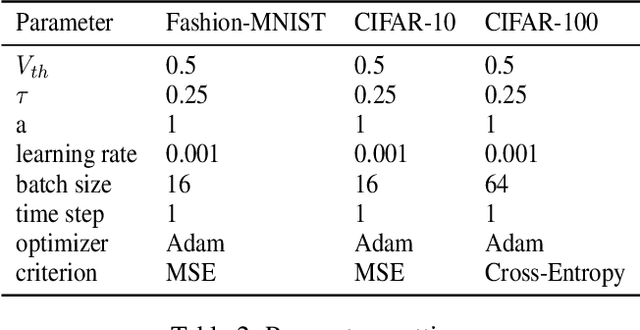
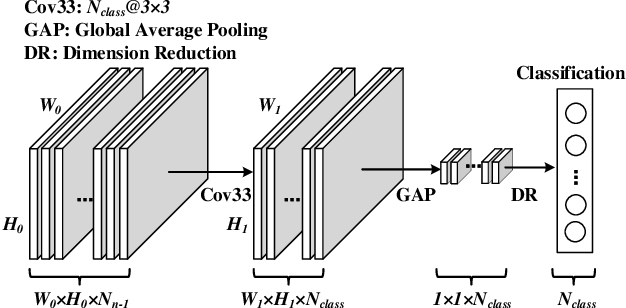
Abstract:Spiking neural network (SNN) is a brain-inspired model which has more spatio-temporal information processing capacity and computational energy efficiency. However, with the increasing depth of SNNs, the memory problem caused by the weights of SNNs has gradually attracted attention. Inspired by Artificial Neural Networks (ANNs) quantization technology, binarized SNN (BSNN) is introduced to solve the memory problem. Due to the lack of suitable learning algorithms, BSNN is usually obtained by ANN-to-SNN conversion, whose accuracy will be limited by the trained ANNs. In this paper, we propose an ultra-low latency adaptive local binary spiking neural network (ALBSNN) with accuracy loss estimators, which dynamically selects the network layers to be binarized to ensure the accuracy of the network by evaluating the error caused by the binarized weights during the network learning process. Experimental results show that this method can reduce storage space by more than 20 % without losing network accuracy. At the same time, in order to accelerate the training speed of the network, the global average pooling(GAP) layer is introduced to replace the fully connected layers by the combination of convolution and pooling, so that SNNs can use a small number of time steps to obtain better recognition accuracy. In the extreme case of using only one time step, we still can achieve 92.92 %, 91.63 % ,and 63.54 % testing accuracy on three different datasets, FashionMNIST, CIFAR-10, and CIFAR-100, respectively.
Ultra-low Latency Spiking Neural Networks with Spatio-Temporal Compression and Synaptic Convolutional Block
Mar 18, 2022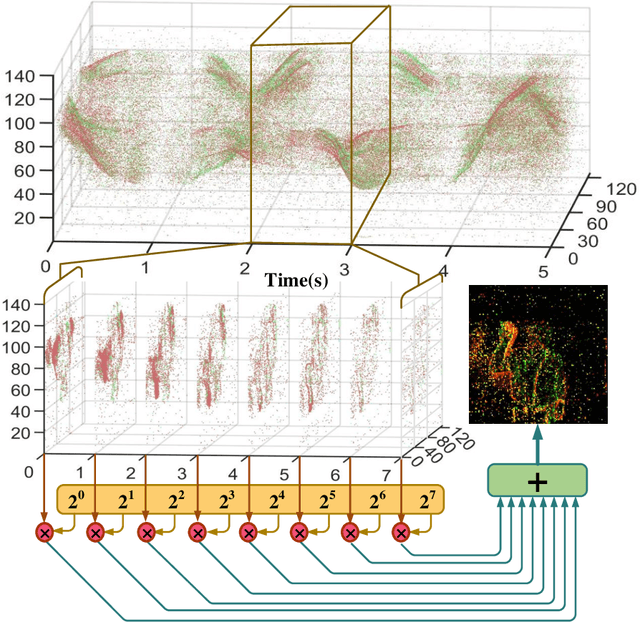
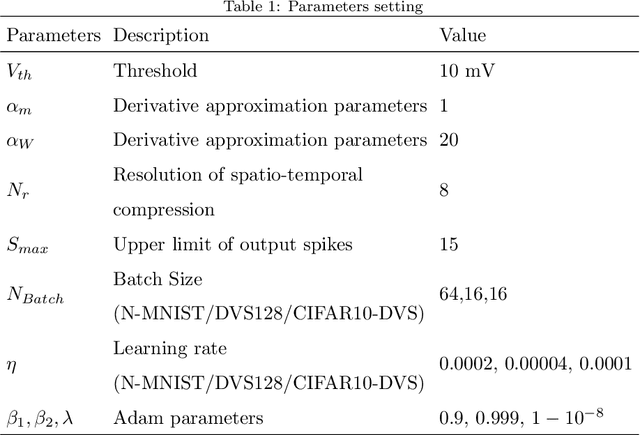

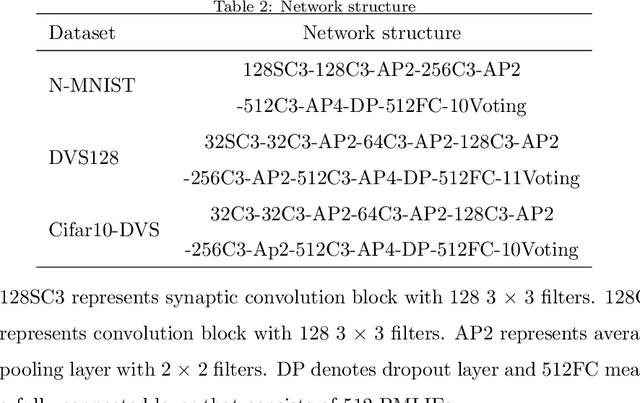
Abstract:Spiking neural networks (SNNs), as one of the brain-inspired models, has spatio-temporal information processing capability, low power feature, and high biological plausibility. The effective spatio-temporal feature makes it suitable for event streams classification. However, neuromorphic datasets, such as N-MNIST, CIFAR10-DVS, DVS128-gesture, need to aggregate individual events into frames with a new higher temporal resolution for event stream classification, which causes high training and inference latency. In this work, we proposed a spatio-temporal compression method to aggregate individual events into a few time steps of synaptic current to reduce the training and inference latency. To keep the accuracy of SNNs under high compression ratios, we also proposed a synaptic convolutional block to balance the dramatic change between adjacent time steps. And multi-threshold Leaky Integrate-and-Fire (LIF) with learnable membrane time constant is introduced to increase its information processing capability. We evaluate the proposed method for event streams classification tasks on neuromorphic N-MNIST, CIFAR10-DVS, DVS128 gesture datasets. The experiment results show that our proposed method outperforms the state-of-the-art accuracy on nearly all datasets, using fewer time steps.
Direct Training via Backpropagation for Ultra-low Latency Spiking Neural Networks with Multi-threshold
Nov 25, 2021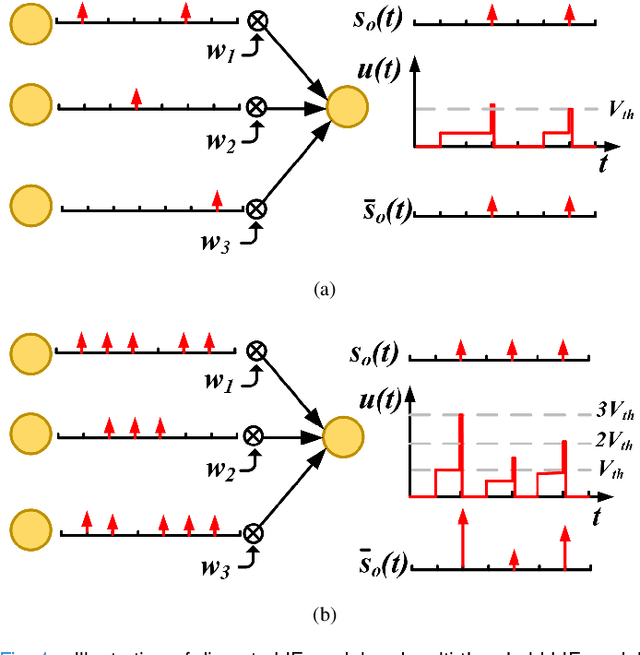
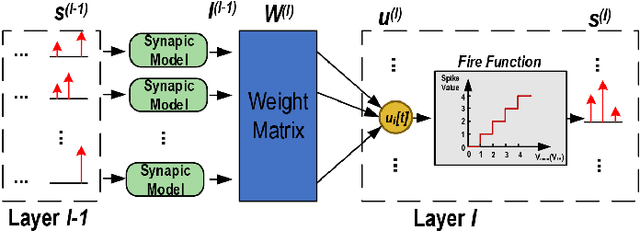
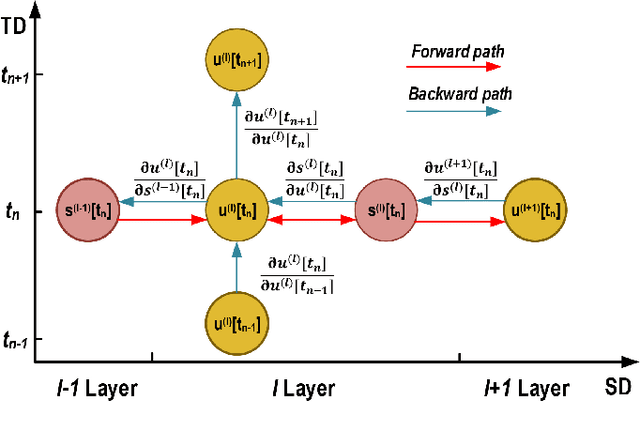
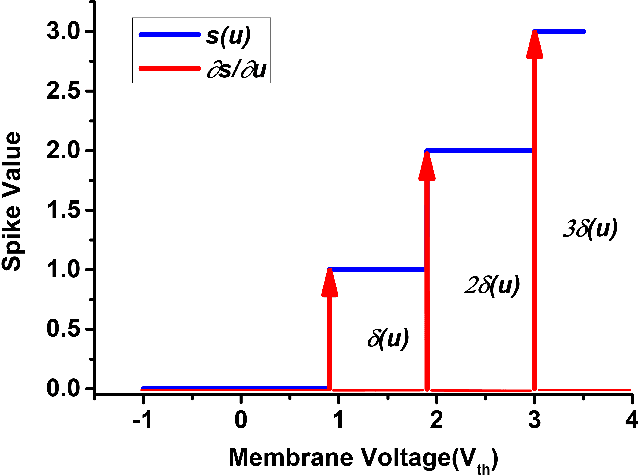
Abstract:Spiking neural networks (SNNs) can utilize spatio-temporal information and have a nature of energy efficiency which is a good alternative to deep neural networks(DNNs). The event-driven information processing makes SNNs can reduce the expensive computation of DNNs and save a lot of energy consumption. However, high training and inference latency is a limitation of the development of deeper SNNs. SNNs usually need tens or even hundreds of time steps during the training and inference process which causes not only the increase of latency but also the waste of energy consumption. To overcome this problem, we proposed a novel training method based on backpropagation (BP) for ultra-low latency(1-2 time steps) SNN with multi-threshold. In order to increase the information capacity of each spike, we introduce the multi-threshold Leaky Integrate and Fired (LIF) model. In our proposed training method, we proposed three approximated derivative for spike activity to solve the problem of the non-differentiable issue which cause difficulties for direct training SNNs based on BP. The experimental results show that our proposed method achieves an average accuracy of 99.56%, 93.08%, and 87.90% on MNIST, FashionMNIST, and CIFAR10, respectively with only 2 time steps. For the CIFAR10 dataset, our proposed method achieve 1.12% accuracy improvement over the previously reported direct trained SNNs with fewer time steps.
 Add to Chrome
Add to Chrome Add to Firefox
Add to Firefox Add to Edge
Add to Edge